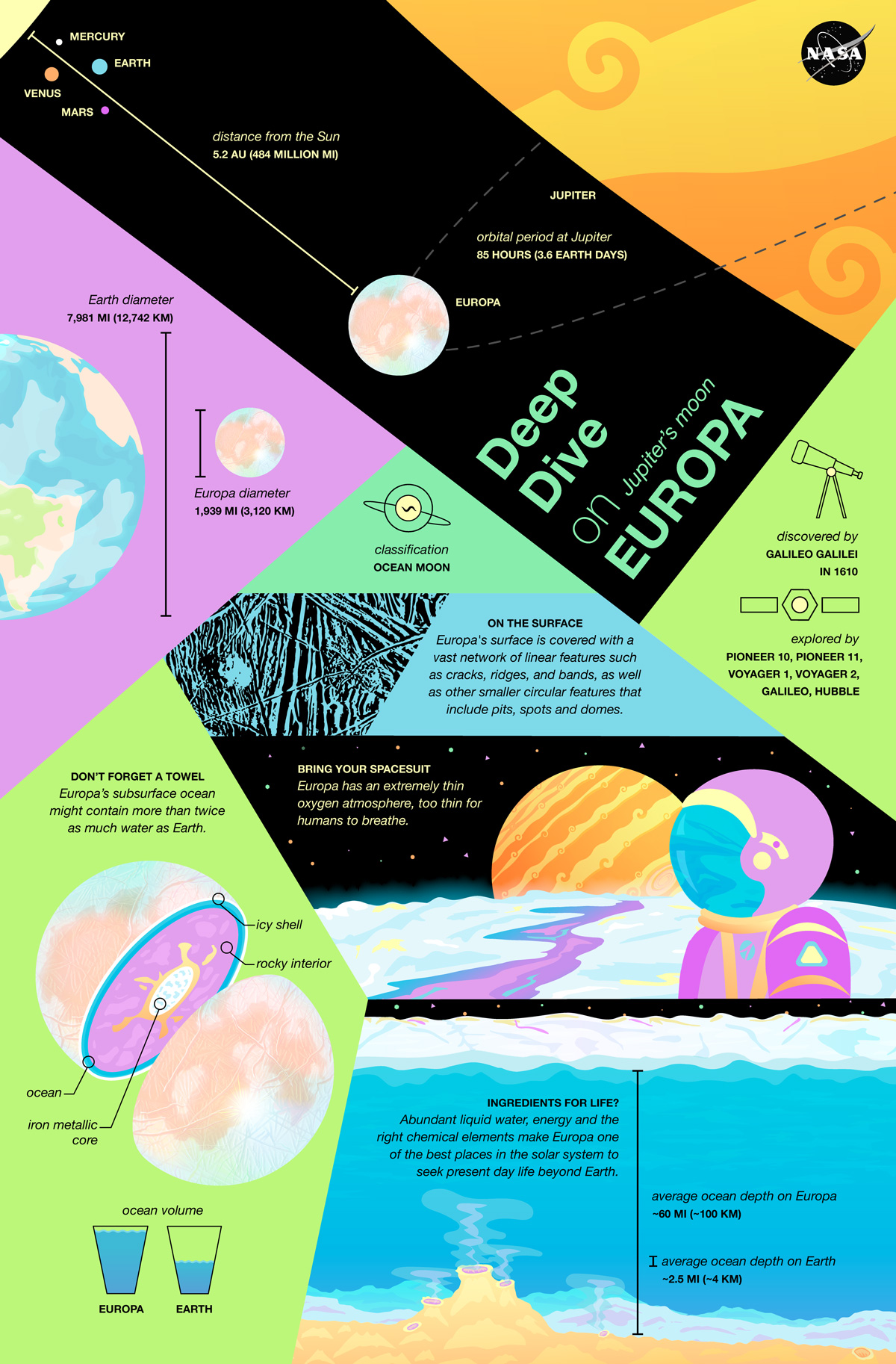Deep Dive on Jupiter’s Moon Europa Infographic
| Credit | NASA/JPL-Caltech |
|---|---|
| Historical Date | June 8, 2021 |
| Language |
|
Jupiter’s icy moon Europa may be the most promising place in the solar system to find present-day environments suitable for life beyond Earth.
Quick Facts
Discovered: Jan. 7, 1610, by Galileo Galilei
NASA Missions: Pioneer 10, Pioneer 11, Voyager 1, Voyager 2, Gallileo, Hubble, and Juno spacecraft
Classification: Ocean Moon
Distance from the Sun: 5.2 Astronomical Units (Earth = 1 Astronomical Unit)
Amount of Time to Orbit Jupiter: 85 hours (3.6 Earth Days)
Atmosphere: Europa has an extremely thin oxygen atmosphere, too thin for humans to breathe.
Ocean Depth: ~ 60 miles (~ 100 kilometers) Scientists think Europa has an ocean twice the size of Earth’s ocean.
On the Surface: Europa's surface is estimated to range from 2 to 20 miles (3 to 32 kilometers) thick. It's covered in cracks, ridges, and bands, as well as other smaller circular features that include pits, spots and domes.
Ingredients for Life? Abundant liquid water, energy, and the right chemical elements make Europa one of the best places in the solar system to seek present day life beyond Earth.






























